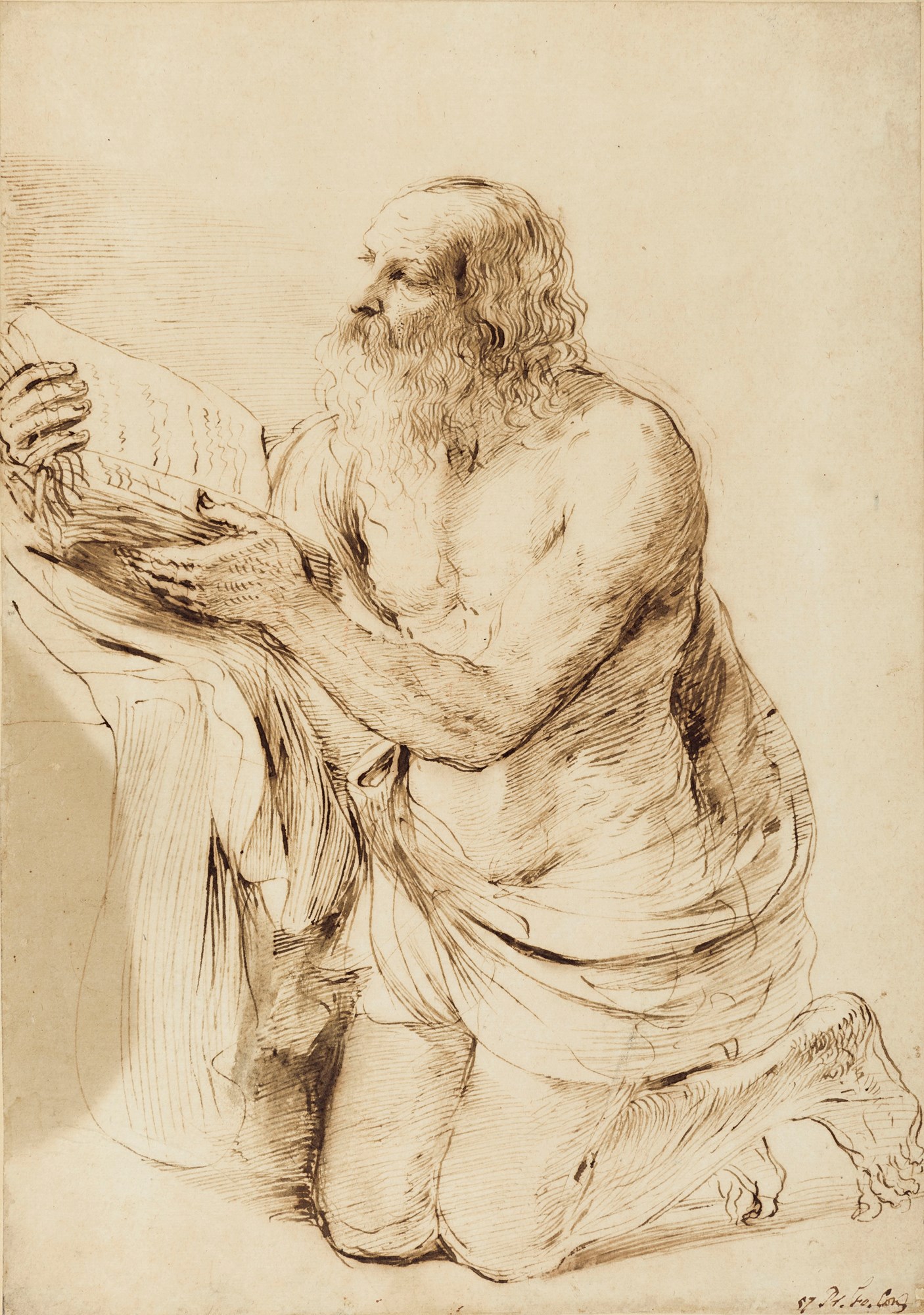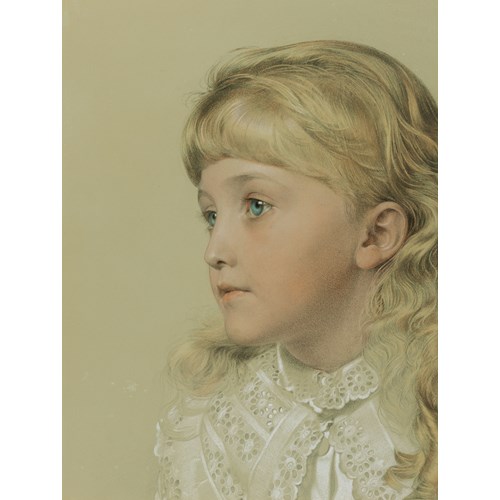Guercino treated the subject of Saint Jerome in several paintings, mainly half-length in format, particularly in the late 1630s and the 1640s. As Nicholas Turner has noted, ‘Always popular in the Catholic Church, the saint was one of the four Latin fathers and his main claim to fame was his Latin translation of the Bible (the Vulgate), partly written in the desert.’ This impressive sheet, which is of a scale unusual among Guercno’s drawings, remains unconnected to any surviving painting by the artist.
As the Guercino scholar David Stone has written of this drawing, ‘This exquisitely preserved St. Jerome, one of the most beautiful representations of this subject in Guercino’s drawn oeuvre, may very well be preparatory for one of the many compositions of this iconography mentioned in the Libro dei conti. However, the sheet does not seem to connect to any of the extant paintings. The drawing is so suave, carefully controlled, and luminous in its overall effect - so complete in its composition – that it is worth considering that it was made as a kind of “meditation” on the subject rather than as a preparatory sketch. Such relatively complete and finished drawings could be given away as presents to friends; but they could also be saved (like so many of Guercino’s drawings) as resources for him and his studio for future projects. Guercino was one of the first artists in history to consider drawings as complete works of art in their own right. On the basis of style and handling, the present sheet would seem to date from around, roughly, 1640.’
The inscription ‘57. Pr. Fo. Cons’ at the lower right of the present sheet identifies this drawing as coming from the collection of the Casa Gennari in Bologna. Similar inscriptions, which may be inventory numbers, appear on many drawings by Guercino with a Casa Gennari and Bouverie provenance, such as A Seated Nude Woman Embracing a Child in the Courtauld Gallery in London and a Vision of Saint Francis in the Ashmolean Museum in Oxford, to name just two examples. As Nicholas Turner and Carol Plazzotta have posited, ‘It is likely that this annotation is a reference to the drawing’s original location in the series of albums of drawings by Guercino preserved by the artist’s heirs until the dispersal of the collection in the eighteenth century, the letters perhaps standing for ‘Primo Foglio’.’
Mahon and Turner have noted that ‘most of the drawings by Guercino in the Casa Gennari were preserved in a series of albums, five of them of imperial size and three royal. This was the nucleus of the family’s collection and one of its greatest treasures. The description of the bindings of these albums in the inventory gives some indication of their splendour. The first six were covered in red leather, trimmed with gilt and had silk cords attached to the spine to act as dividers, some in red, others in blue and green. Kept in this way, the drawings remained flat and free from dust and were not exposed to light. It was an ideal method of preservation; and this explains why so many drawings by Guercino with a mid-eighteenth-century provenance from the Casa Gennari still remain in such impeccable condition...Preserved en masse in this way, Guercino’s drawings must have seemed impressive indeed and would have been the envy of any collector.’
A stylistically similar pen and ink drawing of Saint Jerome kneeling and adoring a crucifix in a landscape was likewise formerly in the Casa Gennari collection and was on the art market in London in the 1970s. Another comparable study of Saint Jerome with the same provenance, datable to the 1640s, is in the Princeton University Art Museum.
The present sheet was part of a large and important group of drawings by Guercino acquired from the Casa Gennari in the 1740s by the young British antiquarian and collector John Bouverie (c.1722-1750), which was later described by the contemporary English collector Henry Reveley as ‘perhaps the finest collection of Guercino’s drawings in England.’ As Turner and Plazzotta have stated, ‘drawings by Guercino with a Bouverie collection provenance share many features in common. They are in general in remarkably fine, even pristine condition, which implies, as Reveley was the first to observe, that they were very largely the drawings once preserved in the albums described by Malvasia as being in the master’s house…Although the drawings now at Windsor remain the single most impressive group of Guercino’s drawings in existence…[it contains fewer of] the more desirable pictorial composition studies in which the Bouverie collection was so rich.’
Provenance: By descent from the artist to his nephews, Benedetto and Cesare Gennari, the ‘Casa Gennari’, Bologna
By descent to Carlo Gennari, Bologna
Acquired in the 1740s by John Bouverie, Betchworth, Surrey
By descent to his sister, Anne Bouverie, Betchworth, Surrey, until 1757
Her son, Christopher Hervey, London and Betchworth, Surrey, until 1786
His aunt, Elizabeth Bouverie, Barham Court, Teston, Kent, until 1798
Bequeathed to Sir Charles Middleton, later 1st Baron Barham, Barham Court, Kent
By descent to his grandson, Charles Noel, 3rd Baron Barham and later 1st Earl of Gainsborough of the second creation
Thence by descent in the collection of the Earls of Gainsborough, Exton Park, Oakham, Rutland
Possibly their sale (‘Drawings by Old Masters, The Property of The Rt. Hon. The Earl of Gainsborough, Of Exton Park, Oakham, Rutlandshire’), London, Christie’s, 27 July 1922
Possibly E. Parsons and Sons, London
Private collection.
More artworks from the Gallery




_T638722088181025454.jpg?width=500&height=500&mode=pad&scale=both&qlt=90&format=jpg)

, 1963_T638450929739285139.jpg?width=500&height=500&mode=pad&scale=both&qlt=90&format=jpg)


